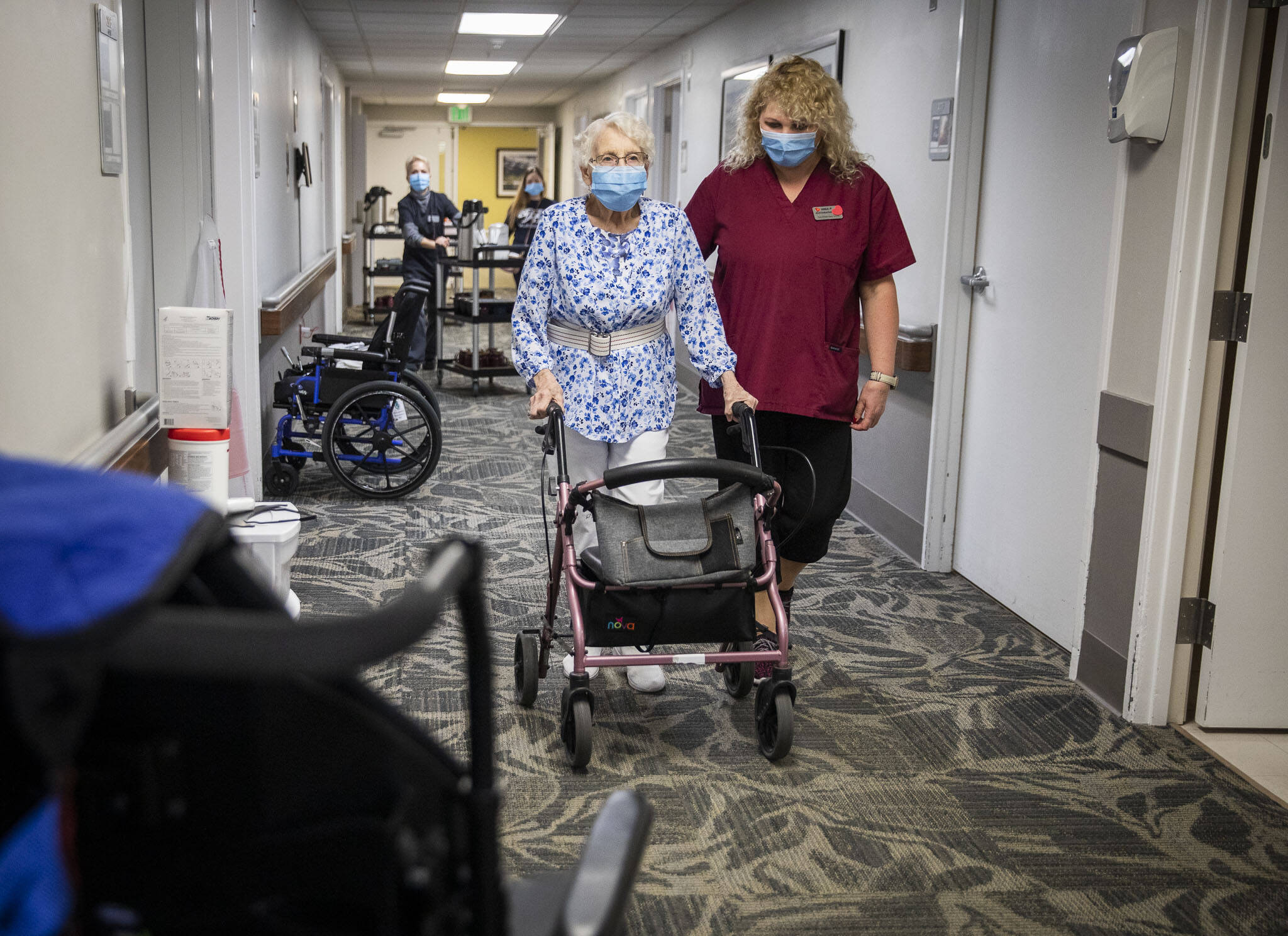By The Herald Editorial Board
It’s a uncomfortable statistic — especially for those who are nearing retirement age or are already there — that 70 percent of adults who reach the age of 65 are likely at some point in their lives to need long-term nursing care supports and services, including home-based care, assisted-living care or nursing home care, either funded privately or by Medicaid, according to a 2019 study for the federal Department of Health and Human Services.
That statistic — with a large number of the state’s baby boom population now past the age of 65, nearly 16 percent of the state’s 8 million people — also is bumping up against funding concerns as state lawmakers begin budget discussions that will pit legitimate funding needs against a $10 billion to $12 billion gap over the next four years between projected revenue and the state’s previous rate of spending.
While state lawmakers in recent years have addressed concerns that improved pay for those providing care — in particular at skilled nursing facilities and assisted-living centers — that need has been largely met in piecemeal fashion, dependent on renewals, rather than a sustainable, long-term commitment to providing well-funded care.
That care can be intensive, putting a premium on the work of trained and certified workers.
“We see a lot of folks come into assisted living because they don’t quite have the network at home,” Carma Matti-Jackson, chief executive for the Washington Health Care Association, a trade association that represents about 40,000 workers at some 750 facilities providing skilled-nursing for about 13,000 residents and another 33,000 in assisted-living facilities.
And the need is not diminishing. Over then next decade, that population is expected to increase by as much as 30 percent.
Both types of facilities, each with a share of residents funded by shared state and federal Medicaid funding, provide a range of care. Those in skilled-nursing facilities require more intensive care, said Matti-Jackson, but even those in assisted-living — especially those in memory-care facilities for Alzheimer’s patients — still need care staff who can help with monitoring and administering medications, helping with therapy, assisting with personal care and hygiene and getting folks to meals, activities and social interaction.
“One of our biggest concerns is with the age wave, which we are now well into, having capacity to be able to serve folks,” she said.
The state and federal government basically split the costs for reimbursing Medicaid care; 50-50 for skilled nursing; and 53 percent from the federal government and 47 percent from the state for those in assisted living facilities.
Concerned for not losing ground over recent advances, the association and others concerned with elder care are asking state legislators to adopt an increase in the state’s share of Medicaid funding — which would bring an automatic matching increase in federal Medicaid funding — to help attract and retain certified nursing assistants and others.
Currently, Medicaid covers only 82 percent of the costs of care for labor and 68 percent of operational costs for assisted living care; the association is lobbying for an increase — as outlined in proposed budgets for skilled nursing care by former Gov. Jay Inslee and the state Department of Social and Health Services — to increase that funding for assisted living as well to 95 percent and 75 percent of those costs, respectively.
Two years ago, the budget passed by state lawmakers and signed by the governor provided a 14 percent increase in Medicaid reimbursements and added funding for some specialty care, but that increased support isn’t guaranteed to continue.
“The Legislature has done a good job of trying to address Medicaid shortfalls,” Matti-Jackson said. “Over the past three or four years, they’ve reduced our annual Medicaid shortfall for skilled nursing facilities from $150 million a year to $66 million a year. But my concern is now, with all the talk about deficits and budget, that we go backwards, and now it’s just not the time. It’s not the time to go backwards.”
At the same time, advocates for long-term care would like to see an annual review of the data that determines Medicaid reimbursement rates, rather than using old data from two or more years ago to set those rates.
The association and other advocates also are seeking policy legislation to speed up the state’s applications and certifications for those training as home care aide staff by receiving their certification testing in the same facilities where they are trained; extend the timeline for certification; allow aides to administer insulin using pre-filled injection pens; allow skilled nursing facilities to offer kidney dialysis services; and provide health insurance coverage for workers, legislation also supported by the Service Employees International Union.
While some of the policy legislation doesn’t directly involve funding issues, it would address efficiencies that could make the most of the funding that the state and federal governments provide.
“We want to make sure that we are doing everything we can to take care of the people who deserve the care who are coming in,” Matti-Jackson said. “And assure high quality as well.”
Talk to us
> Give us your news tips.
> Send us a letter to the editor.
> More Herald contact information.

























